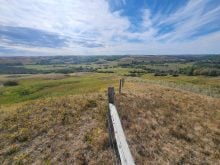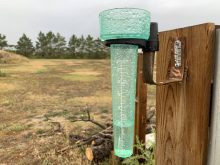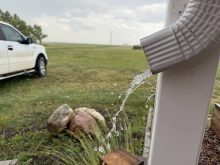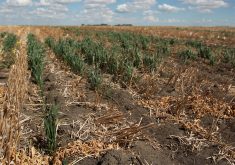Wetlands can play an important role as nature-based climate solutions, and they may also offer benefits to farmers and the agricultural sector in terms of crop yields and more, says a research scientist.
However, more work is needed to determine exactly what the benefits are and how they can be realized in a way that mutually benefits farmers, the environment and the general public, Pascal Badiou, a research scientist with Ducks Unlimited Canada, said at the recent Saskatchewan Association of Watersheds conference.
“I think there’s value to learning how we can integrate wetlands into productive agricultural systems,” said Badiou, whose research focuses on the ecology of wetlands, including their capacity to capture carbon and manage storm-water and agricultural runoff at the watershed scale.
Read Also

Europe holds promise for Canadian lentils
Pulse Canada is trying to help boost lentil consumption in Europe, which is already the fourth largest market.
He said maintaining wetlands on farms may benefit farmers by cooling and humidifying their surrounding environment and landscapes, potentially helping protect crops from yield losses during extreme events such as droughts or heat waves.
“Is there a climate benefit to those (wetlands) in drought years, heat dome years, usually when your yields are significantly being depressed? Do we have a little bit of a ‘Goldilocks’ zone effect, where these wetlands are helping emit some of the heat stress that crops might be facing? We’re hoping to start to dig into that with some precision agricultural data.”
Badiou said another main benefit is water purification.
Leaving agricultural wetlands on land helps farmers retain important nutrients for cropland, including phosphorus and nitrogen, which could benefit downstream water quality, he added.
Badiou said his research has showed that about 1.7 kilograms of phosphorus per hectare per year are being exported from drained wetlands, on average.
“When you start comparing that to some of the other land use conditions, that’s pretty significant,” he said.
“We’re taking areas that acted historically as important to phosphorus sinks … converting those to critical source areas for phosphorus export.”
For this reason, Badiou said restoration and conservation efforts could also be important from a public relations perspective.
“There’s a role to keep these natural systems as a risk mitigation aspect for agriculture just because there is such a heightened awareness on environmental issues associated with agricultural production.”
Badiou’s research has also showed the extent of the potential of wetlands to serve as a nature-based climate solution by sequestering carbon and providing collective regulation.
“Wetland drainage (in the Canadian Prairies) has a result in about 43 million tons of carbon that was previously stored in some plant material being emitted back to the atmosphere, and so that’s roughly equivalent to the emissions of 1.5 million cars for 20 years,” he said.
“That was just to set a baseline of what we’re working against. If you’re losing that type of ecosystem service when you’re converting wetlands, conceivably, there’s a role for restoring these systems and conserving these systems.”
Given all this, Badiou believes there is still lots to learn about the specific benefits of wetlands and how they can become a tool that is used to mutually benefit the agriculture sector, the environment and the general public.
He realizes this could be a tough sell for farmers.
“An agricultural producer needs to worry about paying their bills. It’s nice to deal with a very clean field.”
However, he also believes that there could be ways for stakeholder groups to work together to support further research and education around these tools and potentially grow their use.
“I think we just need to find a mechanism to find out how can we incentivize producers to keep those natural features again. We understand that they’re producing values to society.”
He said in practice this could involve financial support or incentives for farmers who take measures to protect wetlands on their lands, for example by surrounding them with forage or saline areas.
“I’m probably dramatically oversimplifying this, because you have to overlay provincial regulations, but if we could get there, I think that would be great.”















